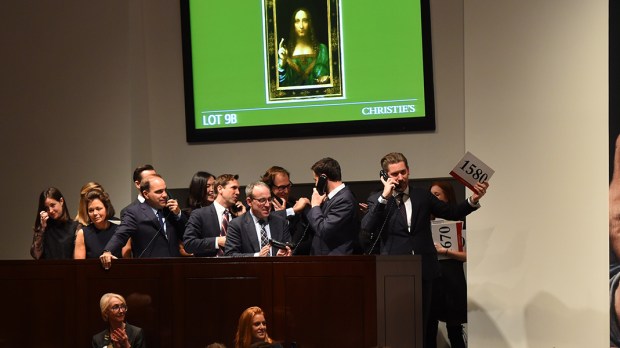United States intelligence reports have identified Saudi Crown Prince Mohammed bin Salman, who is expected to succeed his father as king of Saudi Arabia, as the actual buyer of Leonardo da Vinci’s painting of Jesus, “Salvator Mundi,” according to the Wall Street Journal.
The news, which follows reports this week that a distant relative of the crown prince, Prince Bader bin Abdullah bin Mohammed bin arhan al-Saud, was the mystery buyer of the piece, is surprising in two ways, as the Journal pointed out.
The purchase of the 500-year-old painting for $450 million in a Christie’s auction last month comes in the midst of Prince Mohammed’s crackdown on corruption and self-enrichment in Saudi Arabia. MBS, as he is widely known, had 200 of the richest Saudi princes, businessmen and government officials arrested in early November and apparently is holding them until they agree to give back funds they supposedly took from the Kingdom.
It is a time of “deep economic and political uncertainty in Saudi Arabia,” the Journal points out.
“The image of the crown prince spending that much money to buy a painting when he’s supposed to be leading an anticorruption drive is staggering,” Bruce Riedel, a former CIA officer and leading expert on Saudi politics, told the newspaper.
The favorite son of King Salman has overseen austerity measures on government ministries to cope with oil-price declines, although some of those measures were reversed this summer.
In addition, it is striking that the heir apparent of the kingdom, which contains Islam’s holiest sites, would import an image of Jesus Christ as Savior of the world, —spending the most money ever paid for a single artwork at auction. Not only does it go against Islam’s core belief that “there is no God but Allah, and Muhammad is his prophet,” the religion’s clerics “generally regard the depiction of human forms of prophets as a sacrilege,” the Journal states.
But the fact that the recently-opened Louvre Abu Dhabi tweeted Wednesday that “Salvator Mundi” would be displayed there may help explain why MBS made the purchase. Abu Dhabi’s ruler, Mohammed Bin Zayed, has acted as a mentor for Prince Mohammed, and Riyadh and Abu Dhabi have been strengthening ties. Both, in fact, recently cut off relations with rival Qatar, which has “reigned as the Gulf region’s undisputed art power” for more than a decade.
The Journal relied on “sources with knowledge of U.S. intelligence.” It also anonymously quoted a Middle East art-world figure familiar with the purchase, who affirmed that Prince Bader “is a proxy for MBS. … It is a fact that this deal was done via a proxy.”
The newspaper also said there is a “trophy-hunting atmosphere” in the international art market today, “as billionaires from China, the Middle East and beyond compete for a handful of masterpieces on the block.”
Plus, in an ongoing rivalry among Middle Eastern royal families for cultural prowess, the latest purchase has solidified Riyadh’s “cultural bragging rights,” the Journal explained.

